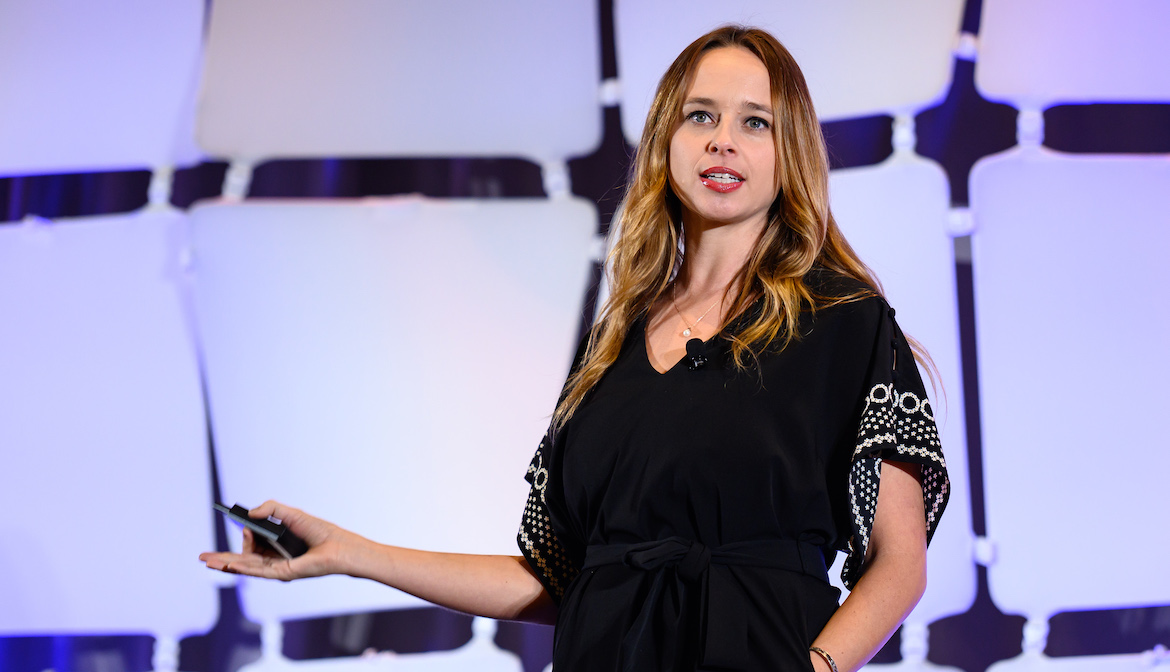5 minutes
Why your employee experience is just as important as your member experience.
“I take the woo-woo out of culture,” said Jessica Kriegel, author, consultant and chief people and culture officer at Experience.com, speaking at CUES’ Directors Conference last week.
Credit unions, like all businesses, need to intentionally craft the culture of their organization and tie it to strategy.
“When your culture is disconnected from your strategy, you are not going to get very far,” she said. Your strategy, powered by an intentional culture, is the key to driving results.
Culture change is not about changing people, Kriegel said. “Your people will be the same. Culture is not about feelings.” It’s not about what millennials want. It’s not ping-pong tables, “thirsty Thursdays” and nap rooms. Instead, it’s something quantifiable and systematic.
Culture is the context around employees that influences their organizational behavior. “That means it’s everything the employee experiences” along their journey with a particular organization. It starts at recruitment and goes through that employee’s exit, she said.
We are at a moment in time when maintaining a strong culture is challenging due to both the Great Resignation and the difficulty of engaging a hybrid workforce.
But it is important to work on the employee experience to make it as uniform as possible.
You will have subcultures at work, Kriegel said. Sales will have a different subculture from HR. These subcultures can also vary depending on the manager employees report to or the branch where they work. These subcultures “will either be created unconsciously or intentionally. Which will you choose?”
Beware looking for the right culture “fit,” she warned. This path leads to making decisions based on unconscious bias. “You’ll miss out on the diversity of thought. It’s very dangerous because culture is not about ‘Are they like us?’ It’s not the culture fit. It’s the culture equation. And it’s a systematic approach to crafting culture intentionally.”
The employee experience is just as valuable as the member experience, Kriegel stressed.
There are eight stages along the employee journey, and you need to create an intentional—and measurable—experience for each.
Attract: Culture is the inward focus of your brand. A lot of companies are having the chief marketing officer and chief people officer be the same person.
Recruit: What is the experience of applying for a job at your credit union? This is the first impression for new employees.
Onboard: At experience.com, newly hired employees receive a welcome and congratulations message. Then they are asked “more about you” to get to know the employee and to gather information about certain preferences, such as T-shirt size for the swag the company sends. Next, they receive a message with links to resources for employees.
Learning and development: What options do employees have for education? How do they access and learn about these opportunities?
Rewards and recognition: Do you have ways for employees to recognize each other for outstanding contributions? For example, at CUES we can give co-workers compliments in the form of “high fives,” which are noted on our intranet and during full staff meetings.
Progression and performance: How is feedback provided—and how frequently?
Retention: Does your credit union do stay interviews? Every six months, Kriegel surveys all employees with these four questions :
- What’s working here? What’s not working here?
- What are the leadership teams’ blind spots?
- What are we missing?
- Any feedback for me personally?
Exit: Consider your exit interview process and logistical steps, such as how and when you collect building keys, name tags and equipment.
Each phase should have measurable goals. For example, to measure success for your onboarding, track: How quickly are new employees able to do their jobs? During the exit interview track: How many people are saying they are leaving because of lack of development and training? How many open jobs are filled from within?
If your credit union has a hybrid workforce with at-home and in-person employees, think about each phase from both lenses. Does onboarding differ drastically for the remote employee? When measuring results at each phase, check for differences between the two groups.
Last month I shared several ways that we make working at CUES fun and create strong staff connections remotely.






